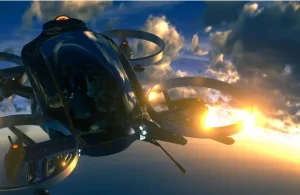- Directory
- Advanced Air Mobility White Papers
- Advanced Air Mobility (AAM)
- Challenges to the Commercialization of Advanced Air Mobility (AAM)
Challenges to the Commercialization of Advanced Air Mobility (AAM)
HotWhite Paper Details
Title
Challenges to the Commercialization of Advanced Air Mobility (AAM)
Year Published
2024
Author
AIAA Certification Task Force
Number of pages:
34
PDF Download
This white paper by the American Institute of Aeronautics and Astronautics (AIAA) addresses regulatory, technical, and infrastructural barriers to integrating Advanced Air Mobility (AAM) systems, such as electric vertical takeoff and landing (eVTOL) aircraft and autonomous drones, into the National Airspace System (NAS). It proposes six strategic recommendations to streamline certification, modernize air traffic management, and align legal frameworks with emerging technologies.
The commercialization of AAM faces challenges rooted in outdated regulatory frameworks, certification complexity, and infrastructure gaps. Below are the key insights and recommendations from the report:
1. Air Traffic Management (ATM) Modernization
AAM’s scalability depends on replacing traditional "detect-and-avoid" systems with networked air traffic solutions to reduce costs and enable high-density operations. Current FAA policies impose prohibitive sensor costs on small vehicles (e.g., delivery drones). The report advocates for a unified, AI-driven network tracking vehicle positions and intentions, similar to drone light shows or FedEx logistics systems.
2. Regulatory Adaptation for Novel Technologies
The FAA’s prescriptive certification process struggles with innovations like electric propulsion and AI. The report highlights the success of Performance-Based Regulations (PBR) in Part 23 reforms and urges collaboration with standards organizations (e.g., ASTM International) to develop compliance frameworks for hybrid/electric systems.
3. Certification Support for Start-ups
Many AAM companies lack FAA certification expertise. The AIAA proposes Certification Tutorial Teams (CTT) to mentor start-ups, emphasizing compliance with 14 CFR Part 21 and leveraging Designated Engineering Representatives (DERs) to navigate iterative processes.
4. Legal and Policy Considerations
Emerging technologies challenge liability frameworks, cybersecurity, and intellectual property laws. The report stresses “future-proofing” legislation to avoid obsolescence and advocates for harmonized federal/state regulations to prevent jurisdictional conflicts.
5. Infrastructure Gaps
AAM requires denser weather monitoring, vertiport standardization, and updated heliport classifications. Only 1% of U.S. heliports are “public-use,” complicating oversight. Recommendations include adopting Safety Management Systems (SMS) for vertiports and expanding FAA data collection for airspace management.
6. Workforce Development
Federal and state agencies need specialized training in AAM technologies. The report calls for incentivizing hiring of vertical-flight experts and expanding Transportation Safety Institute (TSI) courses for infrastructure evaluation.
User reviews
There are no user reviews for this listing.
Already have an account? Log in now or Create an account
